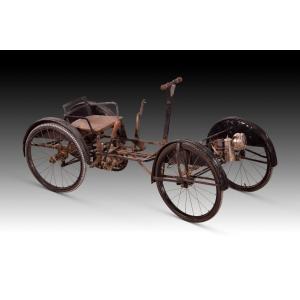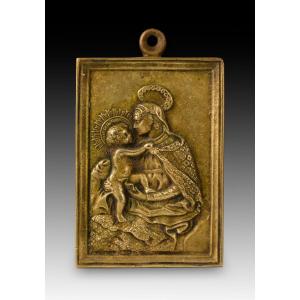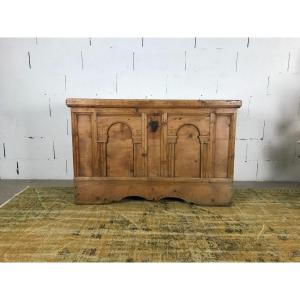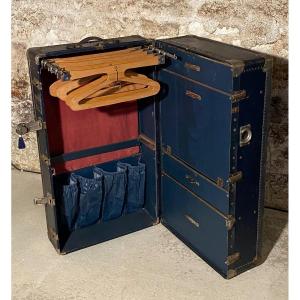Rectangular carved walnut chest with a flat lid and simple decoration on the fronts with smooth moldings of varying widths. It is slightly raised above the ground thanks to six legs whose cylindrical base rests on a flattened circle. On the outside, it has a series of wrought iron fittings (corners with fleur-de-lis finish), two side handles with openwork fittings, and on the front, three key locks with an openwork coat of arms decorated with simplified plant elements. Inside, it has a wooden partition on one side and located high up, which consists of a rectangular space with a hinged lid and two small drawers at the bottom. The three iron keys have their eyes worked and decorated, with simple decorative elements on this side of the stem or central part and the usual flat keys. Three-lock chests are also known as "town hall" or "council" chests, as these chests and those with two keys were often used by religious, military, or civil organizations to store valuable objects and documents, which they protected by giving a key to each person in charge (as many people as there were locks and keys), so they had to come together to open the chest. In many places in the Spanish territories, it served as a municipal archive, in accordance with the laws inherited from a pragmatic of June 9, 1500, by which the Catholic Monarchs obliged the Councils of their territories to build town halls, prisons, and have a chest of privileges and deeds. Although they were abundant at the time, few examples have survived because they fell into disuse and were replaced. Compare with the Council of Villafranca de la Marisma (Los Palacios y Villafranca, Seville), that of Valdipiélago (León), that of Matapozuelos (Valladolid), that of the Cabildo of Buenos Aires in Argentina (18th century, following earlier models), etc. -
Dimensions: 157x64x78 cm


















































 Le Magazine de PROANTIC
Le Magazine de PROANTIC TRÉSORS Magazine
TRÉSORS Magazine Rivista Artiquariato
Rivista Artiquariato